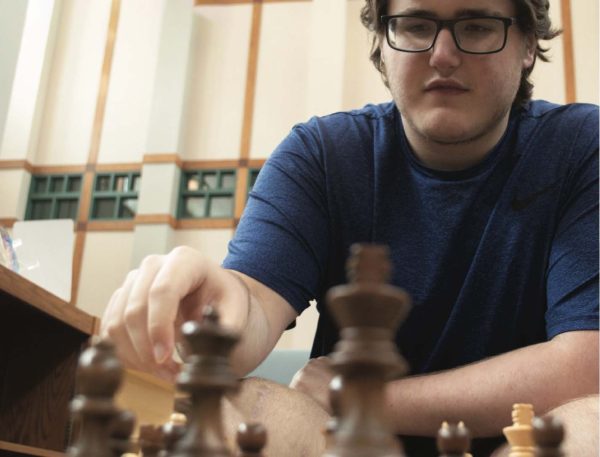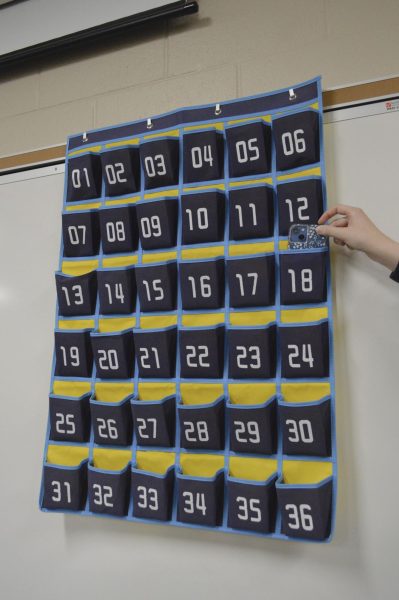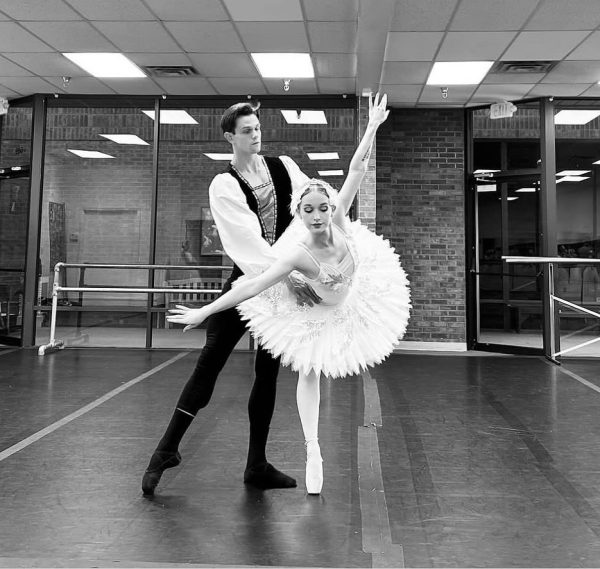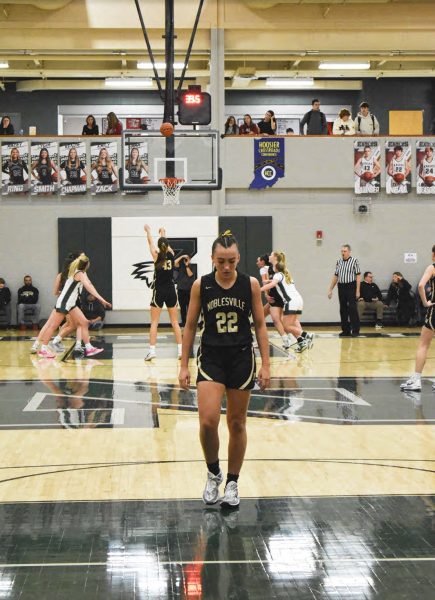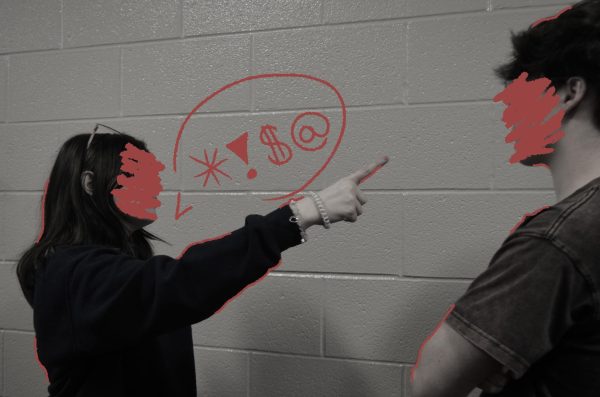The man behind the cube: Tristan Martin can solve a cube in seconds, if you blink you’ll miss it
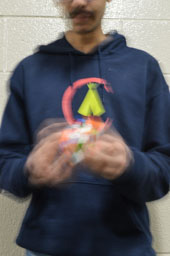
Tristan Martin quickly solves the Rubik’s cube. He has around 50 cubes in his collection.
May 4, 2023
Fifty-four squares. Nine per side. Six faces. The Rubik’s Cube, created in 1974 by Erno Rubrik, has captured players’ fascination for decades. Senior Tristan Martin can solve it in less time than it took you to read the first paragraph. Martin is a speedCuber, someone who solves these colorful cubes for sport. In the world, only 143,000 speedcubers currently exist, and Martin happens to be one of them. Showing off his skills in the lunchroom, in class, or even in the halls, students of Noblesville might know him as the guy with the cube. But how many people know the artists behind the art? Martin’s passion for speedcubing didn’t develop out of nowhere. It all started in seventh grade when his mom brought home a Rubik’s Cube.
“When I first started solving, I was doing it in a few minutes,” Martin said. “Now I’m doing it in ten seconds.”
After practice, solving Rubik’s Cubes can become easier, and eventually solving Rubik’s Cubes can become second nature. But solving this cube isn’t a matter of luck. Instead, Martin has a system that speedCubers have dubbed Cross, First Two Layers, Orientation, Permutation (CFOP). CFOP is a pattern of steps Martin uses for every cube he encounters.
“I follow the same four steps every single solve. The last two steps have a lot of algorithms.They are just a list of algorithms I have memorized in my muscle memory,” Martin said. “The basic definition of an algorithm is you break something up that you have already solved, and you put it back together in a different way, and that will change other things by doing that.”
Becoming a speedcuber is something that Martin did all on his own. One may wonder how he learned the long list of complex terms and algorithms that comes with speedcubing. Was it a teacher? A friend? Martin says he learned how to become a speedcuber, the way most kids learn stuff these days – from the internet.
“People have spent decades studying this stuff, and I just came along and figured it out,” Martin said.
By dedicating much of his free time to the craft, Martin was able to get ahead of the speedcubing game by skipping some stepping stones to get him to where he’s at today.
“I initially learned how to start solving the cube in 2018. I started practicing speedcubing at the start of 2019, and at that time I averaged 50 seconds. Every month after that, I dropped ten seconds,” Martin said. “In that first month of January, I learned all 78 algorithms for the full advanced CFOP in one go, skipping all the intermediate steps in between.”
But Martin doesn’t take all the credit for his success. J Perm, a speedcubing YouTuber, has posted helpful videos online that Martin credits for his success in this sport.
“J Perm has a really good video series. I’ve watched all of [his videos] several times and I got lots of information from that. J Perm is one of the best resources for learning how to solve the cube,” Martin said.
Math and Statistics teacher Justin Keever sees Martin’s strategy as important, as he values the same types of critical thinking in his classroom.
“Mathematical thinking is incredibly necessary to making decisions in our daily lives. Whether you are actually using algebraic equations or quadratic formula — that’s not the point,” Keever said. “The point is for [students] to think conductively and think in steps, and think how you can problem solve.”
Keever sees that there is value in building problem-solving skills, whether through normal day-to-day tasks or mastering the six sides of a cube.
“You need to be able to equip yourself with the knowledge to make sound judgment and decisions for yourself,” Keever said.
For outsiders, the world of speedcubing may not appear natural at first. According to Martin, It takes a lot of practice and time.
“When you learn the cube for the first time there aren’t many algorithms—there are only five you have to learn. As a beginner that’s overwhelming—five algorithms is a lot,” Martin said. “Then you go to the advanced method like me, and now you’re doing 78 algorithms.”
Cubing is more than just a hobby now for Martin. In 2019, he entered a local competition for speedCubers. Even though he didn’t take home a medal, he found a community of people just like him.
“Back then I was [solving in] 15 seconds. There were 135 people, and I got 42nd,” Martin said.
While Martin discovered this passion on his own, his dad, Jeremy Martin, has supported him through it all.
“It’s hard to believe that he can move his hands and fingers that quickly,” Jeremy said.
In the blink of an eye, Martin can solve the Rubik’s cube. But what may not be apparent is the dedication he puts into speedcubing.
“Tristan’s focus and dedication to speedcubing has definitely affected his focus when it comes to other academics,” Jermey said. “His study habits and everything has improved since he got into speedcubing.”
All of the noble traits it takes in order to solve a Rubik’s cube don’t just revolve around Martin’s passion. To his dad’s surprise, his son’s high focus and determination began to affect other parts of his life.
“Tristan [originally] set his expectations really low, where he was just happy solving the cube,” Jeremy said. “He sets reasonable goals for himself, and when he meets that goal, he moves that goalpost a little bit further.”
Martin now owns more than 50 Rubik’s cubes and has spent hours dedicating his life to this passion. For him, no trophy can compare to the simple reward of seeing the face of spectators as he solves a cube.
“I love showing off my skills,” Martin said “It’s really fun to watch people see me do it in ten seconds and be amazed. It seems like such an impossible thing.”




